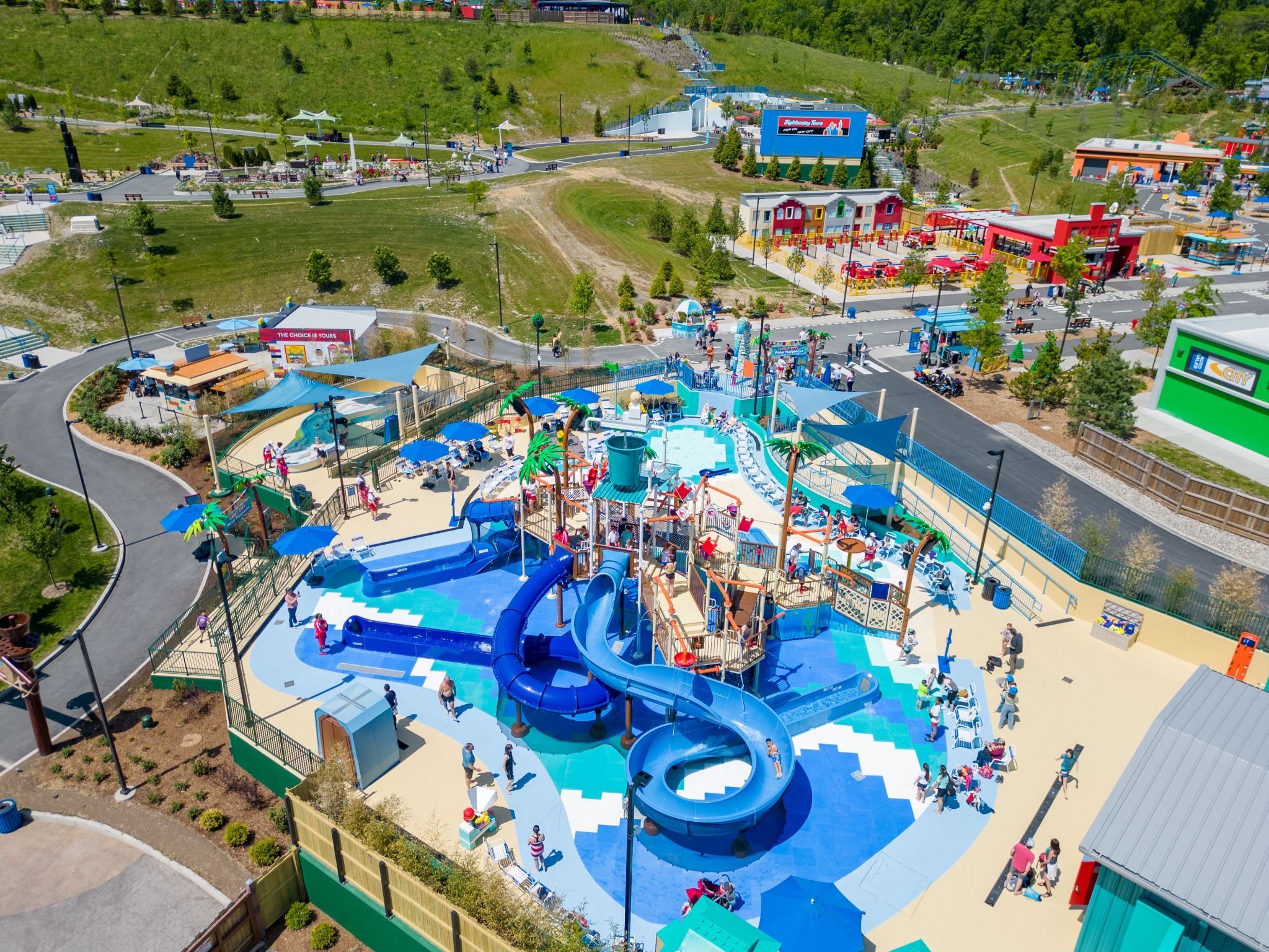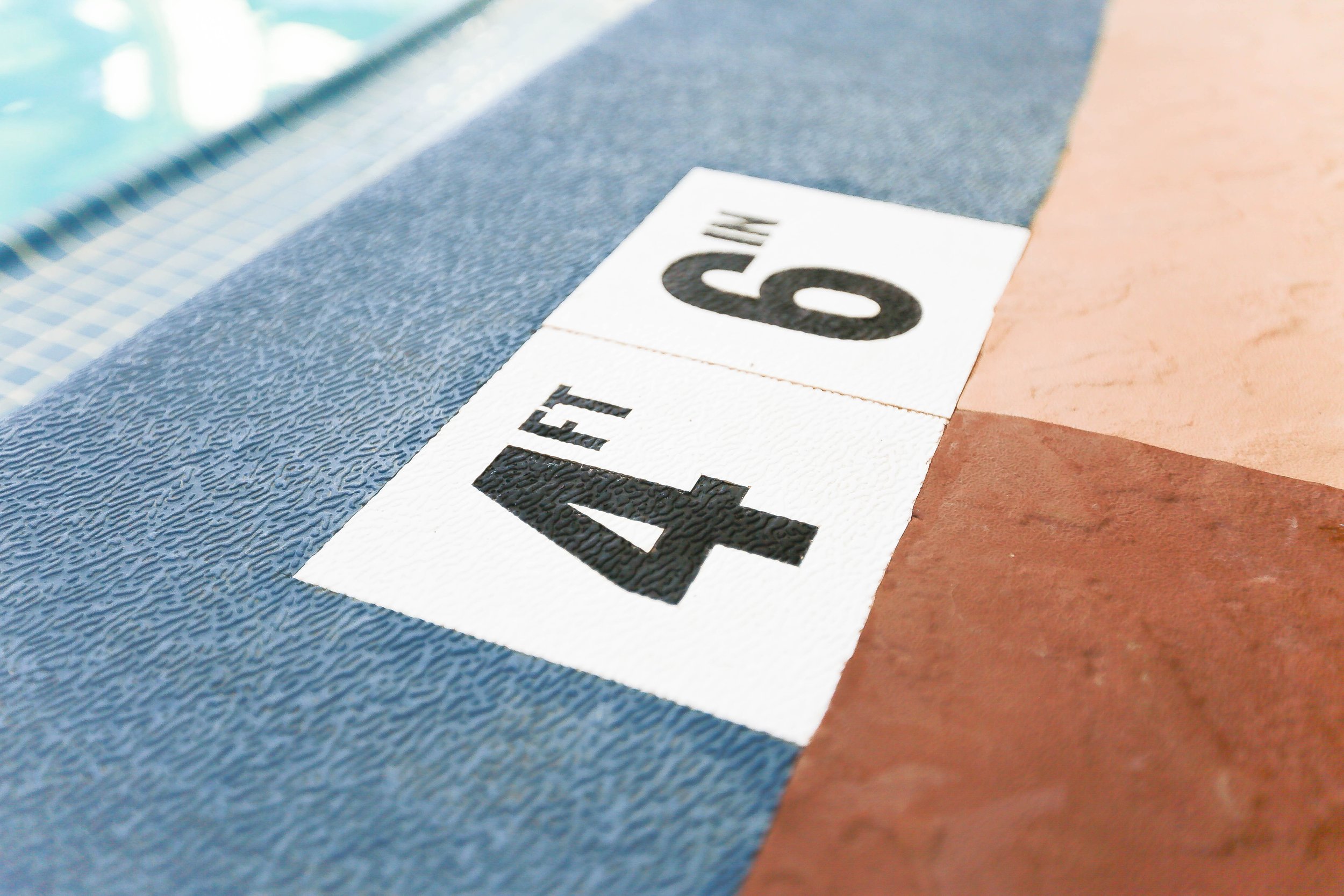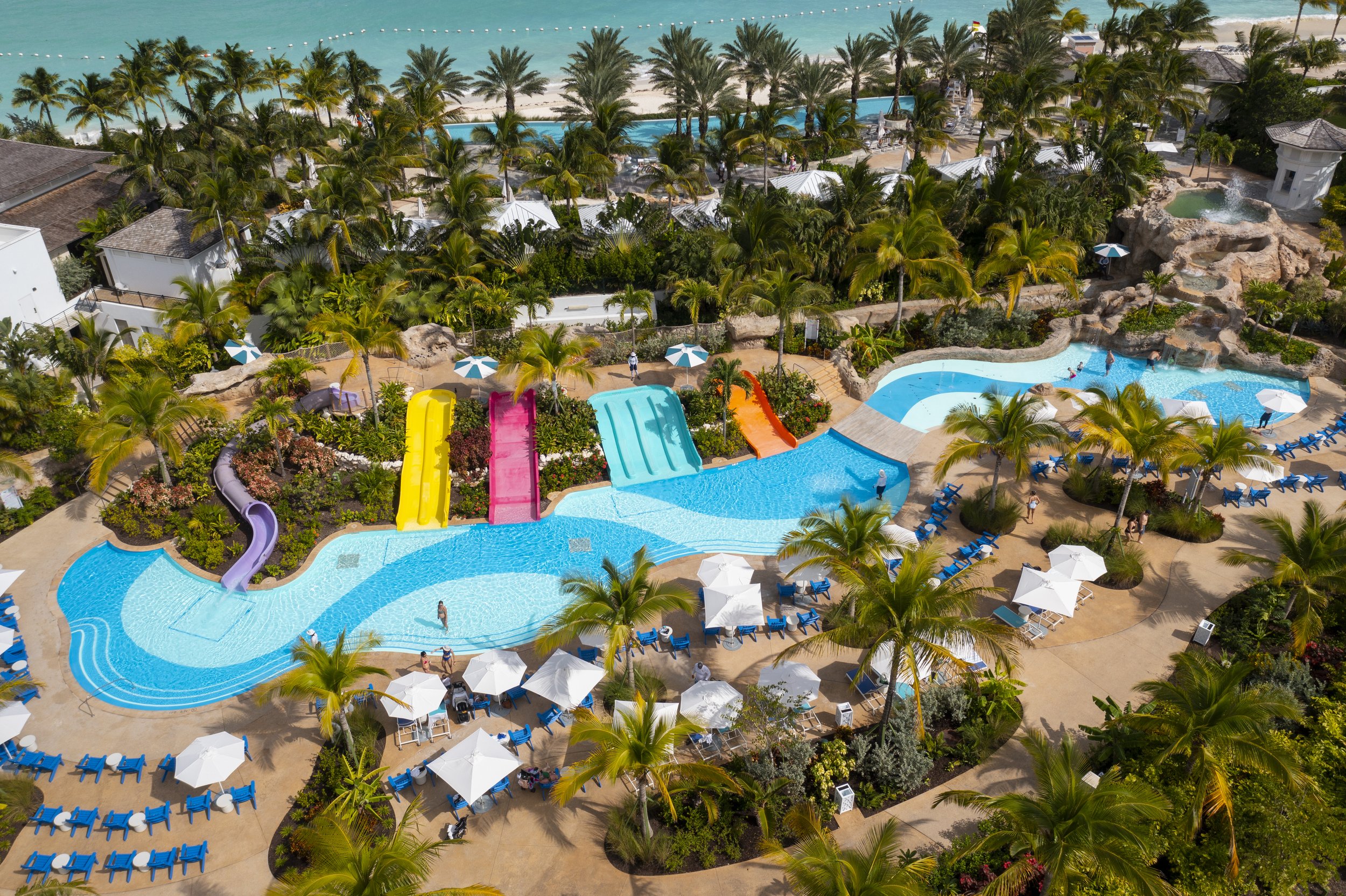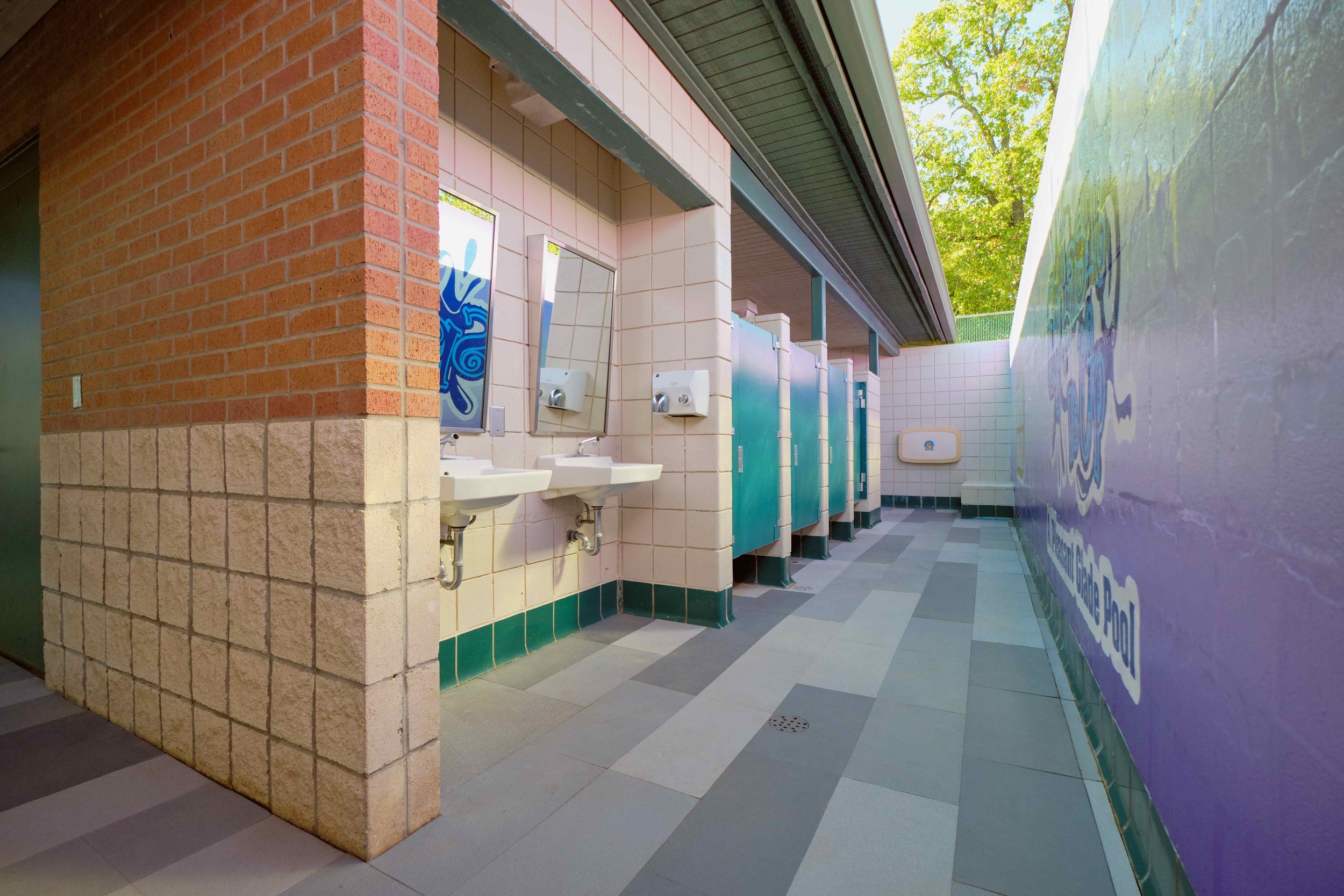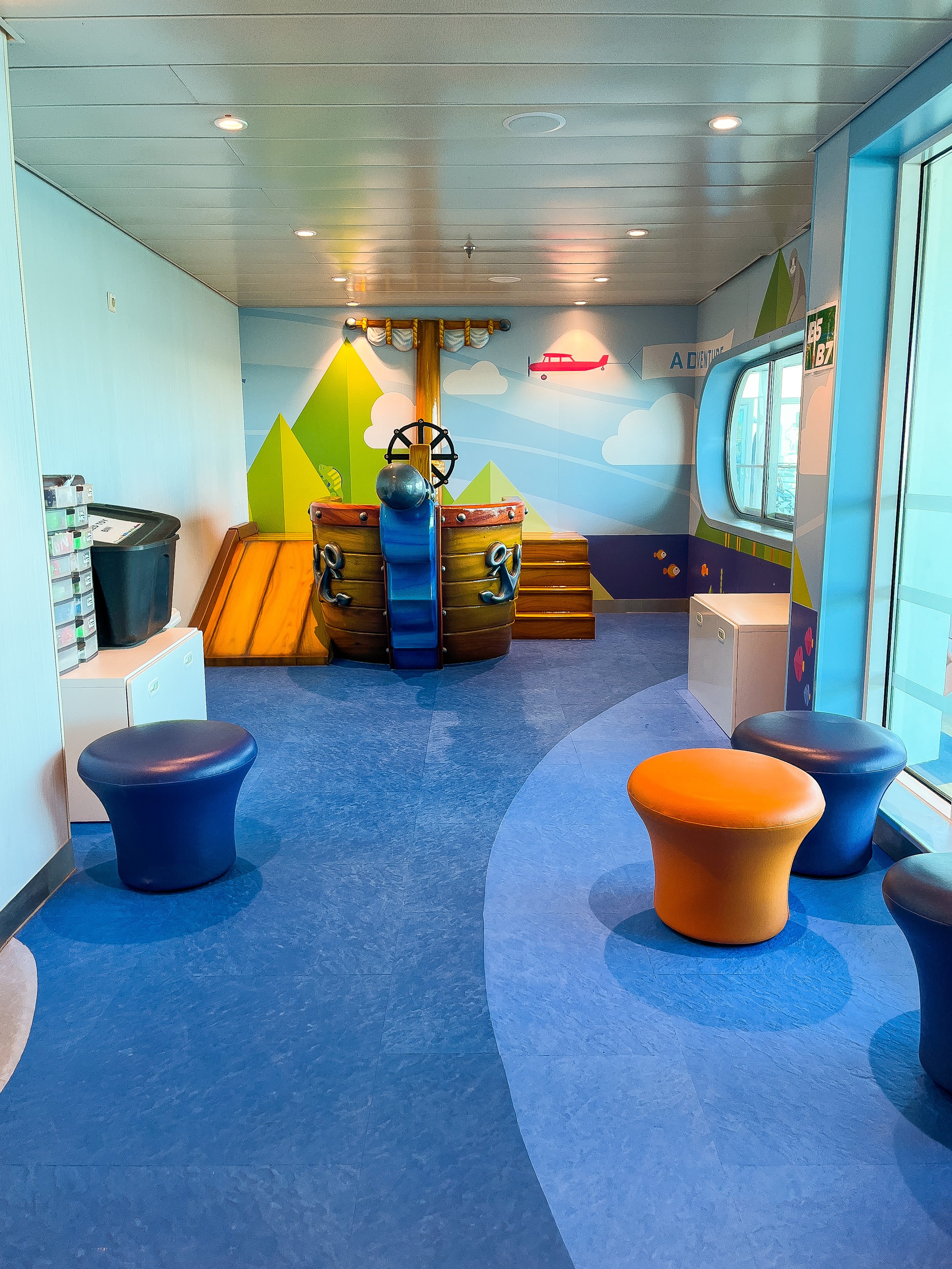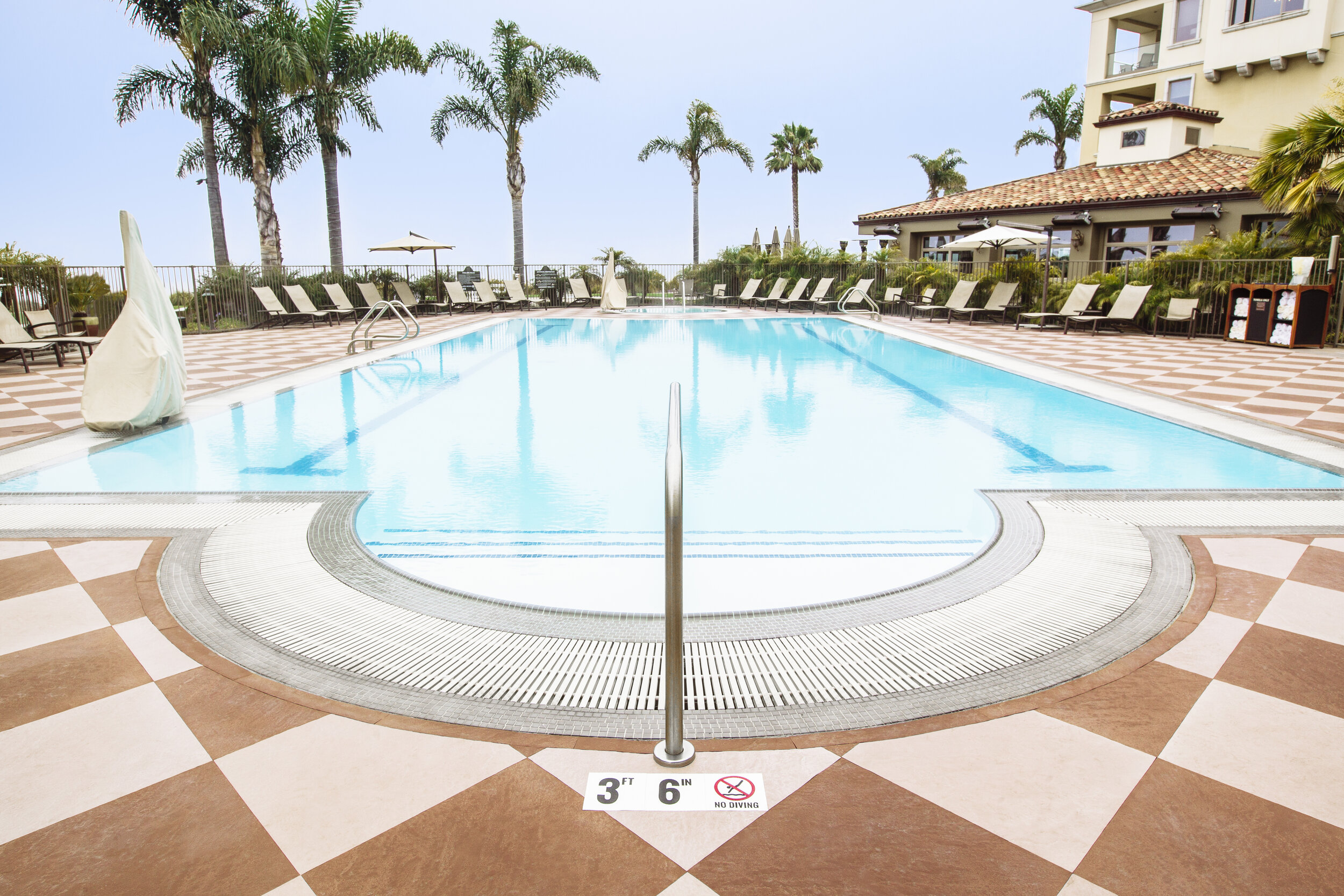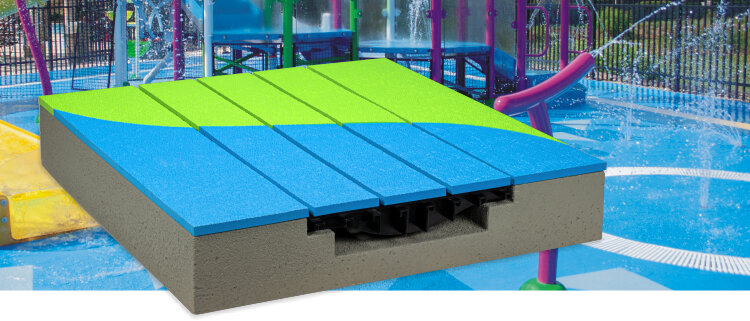Life Floor is engineered for aquatics and designed for play! Our products can be installed virtually anywhere with proper techniques and have been installed at over 2,500 facilities worldwide. Explore some of our most common application types below and discover how Life Floor may be a good fit for your project.
Splash Pads
Splash Pads are one of our most common project requests and we often see both retrofit and new build construction types.
Life Floor is certified to NSF/ANSI/CAN Standard 50 which was created by NSF International specifically for interactive water play venues, also known as splash pads and spray grounds. As a certified product, Life Floor meets 6 performance-based criteria including Slip-Resistance, Cushioning, Impermeability, Cleanability, UV Resistance, and Chemical Resistance.
It’s common for children to run around spray features to dodge water or re-engage with the amenity from different angles. This area is referred to as the overspray area or apron.
Including overspray areas in surface design is beneficial to increase safety where children are still engaging in play. The Life Floor Studio and authorized designers can easily expand designs to cover these areas in ways that complement the available space.
Without overspray
With overspray
Pool Decks
Pool decks are another of our most popular requests. Life Floor is flexible and durable which allows for tight coping and wrapping around pool edges and fixtures. We also offer high contrast depth markers, no-diving symbols, and other safety messaging that is manufactured from our same high-performance safety surfacing. Our tile modularity means that safety messaging will not lose contrast over time since each color of Life Floor is a different tile.
Custom safety messaging such as “Bench Below” or “Please Walk” signs are available upon request.
Zero-Depth Entries
These commonly slippery areas present a hydroplaning challenge for operators, staff, and guests alike due to the sloping surfaces leading into the water. Adding Life Floor’s cushioned and slip-resistant surfacing at these entry points can enhance safety, design, and accessibility at any aquatic center.
Sometimes, it’s difficult for guests to visualize how deep water is becoming and how quickly. Gradients and colors that symbolize shorelines and water depth can be a good visual indicator of zones. For example, a walkway or lounge chair area can have tan colors that resemble sandy beaches while light blues can represent shallow water, gradually developing into darker colors as water depth increases.
In some states within the USA, pool codes require specific surfacing color options under certain depths of water. Internationally, restrictions are often less limiting, allowing for colorful designs that can extend deep underwater.
For more information about the different types of Zero-Depth Entries, read our blog Reducing Slip and Falls at Zero-Depth Entries.
Waterparks
Waterparks have many areas where Life Floor can be installed to solve common challenges and aesthetically transform the design of a space.
Stairs
Due to the modularity of our tiles, stair nosings and treads will maintain high visual contrast over time. Since our products are slip-resistant, they also reduce injuries that occur on slippery slide towers and ramps.
Elevated Platforms
As WhiteWater’s recommended safety surface, Life Floor is standard on AquaForm structures and Landing Pads. Life Floor is recommended on AquaPlay structures and for splash zones under AquaPlay, AquaForm, and AquaSpray structures.
Landing Pads for Waterslide Exits
Life Floor Landing Pads are designed to meet the safety and quality standards of today’s most challenging aquatic conditions. Our Landing Pad tiles will never absorb water and will remain slip-resistant even when submerged underwater.
Edge Pads for Lily Pad Walkways
Lily Pad Walkways are a popular attraction at waterparks and provide a unique way for children to engage with a small space. Edge Pad Landings that are cushioned with Life Floor allow for safer entries and exits to these types of features. They can also include custom graphics, logos, or colors to complement a facility’s theme.
Sloped Ramps
Life Floor is ADA Compliant and can be installed on any sloped access ramp. These commonly slippery areas especially benefit from Life Floor’s slip-resistant properties.
Locker Rooms and Bathrooms
Locker rooms and bathrooms are typically added onto projects that already include a pool deck or splash pad to take advantage of lower installation costs per square foot or square meter.
Since these facility features are often connected to aquatic amenities, they are typically wet and slippery especially near showers and entrances. Wet carpet mats are unsightly and can harbor harmful bacteria or mold which require them to be replaced and cleaned often. Life Floor offers a beautiful alternative that complements facility design and is easy to clean.
DRY PLAY
Life Floor is engineered for aquatics, but some customers enjoy the superior cleanability and cushioning of our products. This is especially true on Cruise Ships where lightweight, IMO Certified products such as Life Floor are highly sought after.
To get started on your project, begin a conversation with one of our Account Executives to find out how Life Floor can solve your surfacing-related challenges.

